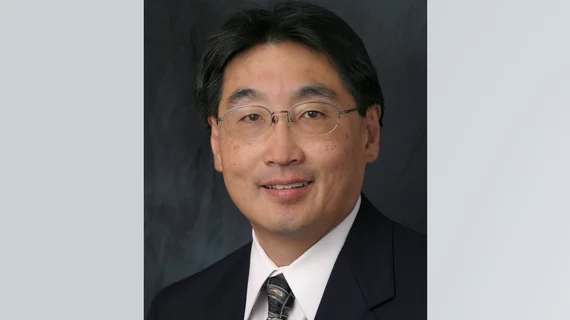RSNA 2018: What to make of the increased hype surrounding AI in radiology
Radiologist Paul Chang, MD, medical director of enterprise imaging at the University of Chicago, began his presentation Tuesday, Nov. 27, at RSNA 2018 by saying radiologists are in need of a reality check when it comes to artificial intelligence (AI).
It’s been everyone’s favorite topic for the last few years, he said, but the industry would be wise to calm down and take things one step at a time. For example, Chang noted, radiologists have had access to AI for decades before the hype even began. It just wasn’t called “AI” or “machine learning”—it was called computer-aided detection (CAD). He also noted that, at its core, these technologies are basically “statistical regression on steroids.”
“AI is not new or spooky,” he said. “It’s been around for decades. So why the hype?”
Chang was quick to answer his own question, explaining that high performance computing hardware is the primary culprit for the increased fascination with AI and its potential for the industry. These advanced technologies—the same ones that keep video game junkies up at night killing zombies and saving princesses—have helped make AI a reality.
Chang compared the ongoing hype surrounding AI to a rollercoaster ride that rises and rises before plummeting back down to the ground. At this moment, radiologists and others within the medical imaging industry are approaching that moment when they question why they ever got on board the ride to begin with.
“When you’re going up the ride, you get excited,” Chang said. “But then right at the top, before you are about to go down, you have that moment of clarity—‘What am I getting myself into?’—and that’s where we are now. We are upon that crest of magical hype and we are about to get the trench of disillusionment.”
Now, Chang added, is when reality begins to set in. It’s like some sort of hype hangover. Radiologists are realizing these technologies won’t rob them of their jobs—but now they want to know how to actually get it up and running. Vendors, meanwhile, are desperate to monetize AI and actually make a profit.
“It is worth the rollercoaster of hype,” Chang added. “But I’m here to tell you that it’s going to take longer than you think.”
Chang emphasized he still thinks AI is incredibly helpful for radiology. Radiologists are experiencing burnout more now than ever before, worklists are growing, patients aren’t getting the individual attention they need and so on.
“We do need something, whatever you want to call it,” Chang said. “I call it advanced IT. We’re talking about data-driven, evidence-driven tools, and we need that. We need the help, because many of us are just barely hanging on.”
The importance of preparing your IT infrastructure
A reasonable step that imaging leaders can take today to help their facility embrace AI is preparing their IT infrastructure. Chang noted that IT departments face significant challenges when it comes to integrating AI into an existing workflow, but that’s a necessary step if you want to actually see benefits once the technologies are ready to be implemented.
A big thing working against IT departments is that decision makers often task those departments with “doing something about AI,” which misses the point completely, he said.
“AI is a critical tool, but you don’t build architecture for a tool—you build it for a solution,” Chang said.
Instead of concentrating solely on the technology, in other words, departments should be focusing on the end results they desire. Focus on improved efficiency, for instance, and how these evolving technologies can help make that a reality. C-Suite executives care about improving efficiency because it can save time and, ultimately, save money. If you want to eventually integrate AI into your standard workflow, speaking about it in those terms is the way to ensure you get the needed investments.
Chang concluded that the key is for radiologists is to remain engaged with AI, but to have a realistic perspective on these technologies going forward.
“The goal is not to be hyped about the technology’s capability,” he said. “You need to be hyped about an infrastructure interested in improving efficiency and quality simultaneously.”

